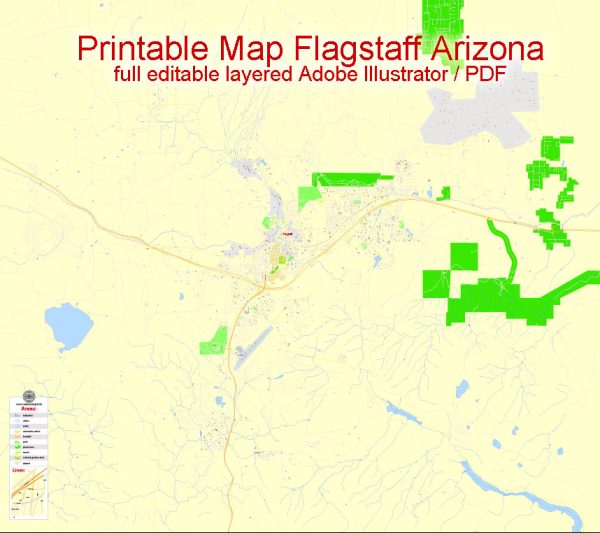Flagstaff, Arizona, has a rich history of urban development that spans centuries, characterized by the influences of Native American cultures, the arrival of European settlers, and the city’s growth as a transportation hub and educational center. Here is an overview of the key aspects of Flagstaff’s urban development history:
- Native American Presence: Flagstaff and its surrounding areas have a long history of habitation by Native American peoples, including the Navajo, Hopi, and Apache. These indigenous communities have a deep connection to the region, and their cultural influence is still evident today.
- Railroad and Early Growth: The city’s modern history began with the arrival of the Atlantic and Pacific Railroad in 1882. Flagstaff’s strategic location on the railroad contributed significantly to its early growth, making it a crucial transportation hub for the region.
- Lumber Industry: The availability of extensive pine forests in the surrounding area led to the development of a thriving lumber industry in the late 19th and early 20th centuries. The Arizona Lumber and Timber Company played a key role in this economic development, contributing to the city’s expansion.
- Route 66 and Tourism: In the early 20th century, Flagstaff became a popular stop along the historic Route 66, bringing increased tourism and economic activity to the region. The city’s unique charm and scenic surroundings attracted travelers, further contributing to its growth.
- Educational Hub: Flagstaff has evolved into an educational hub, primarily due to the presence of Northern Arizona University (NAU), which was established in 1899 as the Northern Arizona Normal School. The university has played a crucial role in shaping the city’s character and contributing to its growth.
- Military Influence: During World War II, Flagstaff became a center for military training due to its suitable climate and terrain. The United States Naval Observatory Flagstaff Station was established in 1955 and has since contributed to astronomical research.
- Contemporary Growth and Sustainability: In recent decades, Flagstaff has experienced continued growth, with a focus on sustainability and preserving its natural surroundings. The city has developed urban planning initiatives to balance growth with environmental conservation.
- Cultural and Recreational Amenities: Flagstaff’s urban development includes the establishment of cultural and recreational amenities, such as the Museum of Northern Arizona and the Lowell Observatory, which contribute to the city’s identity and draw visitors.
- Challenges and Planning: Like many growing cities, Flagstaff faces challenges related to urban planning, infrastructure development, and housing. Balancing the preservation of the city’s historical character with the demands of a growing population is an ongoing concern.
Flagstaff’s history of urban development is a dynamic tapestry that weaves together indigenous roots, economic booms, transportation advancements, and a commitment to education and sustainability. The city continues to evolve while embracing its past, making it a unique and vibrant community in the American Southwest.


 Author: Kirill Shrayber, Ph.D.
Author: Kirill Shrayber, Ph.D.